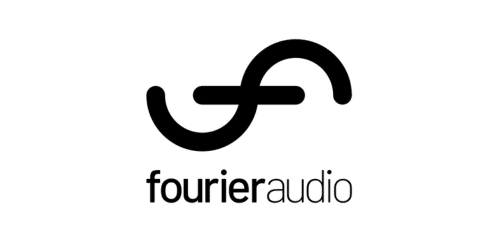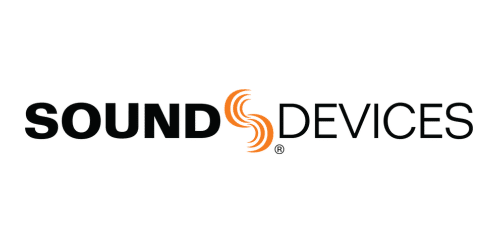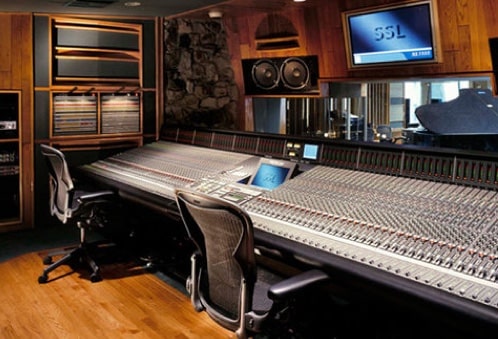A Quantum852 console at FOH and Quantum338 desk on monitors are also joined by a Fourier Audio transform.engine and KLANG:konductor system

FOH engineer Jim Ebdon mixing Linkin Park’s From Zero World Tour on a DiGiCo Quantum852 console equipped with a Fourier Audio transform.engine (photo credit: Ricki Cook, @rickicook)
After a seven-year hiatus, two-time Grammy Award winners Linkin Park are back on the road. Their 50-plus-show From Zero World Tour will take them from Mexico City’s Estadio GNP Seguros on January 31 through November 15 in Porto Alegre, Brazil, and pretty much everywhere in between to stadiums and arenas globally. “Getting back out on the road has been incredible,” band co-founder Mike Shinoda said in a statement about the trek promoting the group’s new set. “The fans’ support is overwhelming, and we’re ready to take this energy even further around the world.”
Some of the world got a taste of what’s to come when the band did a whirlwind mini tour late last year to key regions the band would do multiple shows in, including Europe and Asia, which also served to introduce new band members co-vocalist Emily Armstrong and drummer Colin Brittain, and dropping album singles “The Emptiness Machine” and “Heavy Is the Crown.”
Also playing key roles on the tour are a pair of DiGiCo consoles: a Quantum852 console at FOH and Quantum338 desk on monitors, all sharing two SD-Racks – one each stage left and right, and one SD-MiNi Rack for track playback – on a dual Optocore loop. These are joined by Fourier Audio’s transform.engine loaded with v1.3 software and transform.suite ’25 at FOH, plus an immersive KLANG:konductor IEM monitor mixing system in monitor world. All of this DiGiCo-centric gear was supplied by the tour’s technology vendor, Sound Image, a Clair Global brand.

“I love this new Quantum852 surface,” says Linkin Park FOH engineer Jim Ebdon (photo credit: Janell Riedl, @3ig_j)
Jim Ebdon, the tour’s front-of-house engineer, is new to the band and chuckles at the memory of their NDA-heavy invitation. “It was about April last year when they started asking around, and of course no one would name the band, as it was a heavily guarded secret,” he recalls, noting the impact the band wanted to make with the new personnel lineup. The first show was a private affair in September at Warner Studios in Los Angeles, and it had the hoped-for effect. “It was amazing to be a part of that experience,” he says.
As impactful are the DiGiCo consoles. Those are nothing new to Ebdon, who says he bought the serial-number-five D5 console from DiGiCo founder Bob Doyle in 2002. “He sold me one whilst having coffee with me in my kitchen back in England,” he remembers. “So I’ve been a user since they first started, really, and I’ve used them ever since. I love the layout of this new Quantum852 surface. As well as it sounding clean and present, the console has such an improved look and feel with big bright screens. It’s a real pleasure to operate.”
Ebdon says he’s also a huge fan of the platform’s Spice Rack processing, and regularly uses its compression and EQ as a starting point. “I love just the default one on each channel when you open that tab up, and I like the EQ, which just sort of sweetens the entire console out a bit for me,” he says.
The inclusion of Dante connectivity also makes a huge difference in workflow. “We’ve got a lot of inputs; off the top of my head, I’m probably mixing 60 musical inputs. We’re also direct Dante-from-Pro Tools playback, and the guitar systems are all in the box, so we can just take Dante splits from there. We have a bunch of analog backups, so all the racks and socket files are full up of inputs. We also take drum triggers so we can sample later on or sample on the fly. I also rely heavily on snapshots and the use of macros. I can switch inputs; I can go to a whole set of B inputs or C inputs, muting some channels, turning some on that are coming in from a completely different rack. I love being able to program those kinds of things just for my workflow. So the versatility is incredible. The Quantum manages it all beautifully.”
Also helping is the Fourier Audio transform.engine loaded with v1.3 software and the brand new transform.suite ’25 subscription bundle – two of them, in fact, at FOH, for compete redundancy, which Ebdon has loaded with favorite plugins, including FabFilter, Valhalla reverbs, the Fairchild 1176 and LA-2A, and Tube Tech. “I loaded it up with everything I tend to use and, of course, whatever the band were using on the record,” he says. “Sometimes I’d get requests for specific delays or weird effects, and I’d get sent pictures of their plugins from the actual session, so I could match the parameters as closely as possible and recreate the recorded effects on stage. I know it’s sort of early days for Fourier, but it’s been rock solid. I’m loading up the plugin suite as we speak, actually, and I’ll have that going for the first show back in April.”

Pasi Hara mixing monitors for Linkin Park’s From Zero World Tour on a KLANG:konductor-equipped DiGiCo Quantum338 console (photo credit: Hugo Pinzon)
Over in monitor world, engineer Pasi Hara is piloting a Quantum338 – his favorite surface of the lineup – with a KLANG:konductor IEM mixing system integrated. “The flexibility that the Q338 offers is incredible for workflow, and being able to easily route things wherever needed point-to-point, as well as being able to share the head amps with FOH,” he says.
Processing is liberally applied for monitors and Hara is a fan of the Mustard and Spice Rack options on the Quantum338, as well as the fact that he can access the console’s Stealth Digital processing using an iPad app, enabling him to keep an ear on any location on stage. “I’ll use a mixture of the two, maybe Mustard EQ and then fine-tuning with the onboard EQ,” he says. “There are plenty of options. I especially like the Chilli 6 Dynamic EQ. I have that across my ‘money mixes,’ so to speak” – principal band members – “because I can get stuff done with a lower latency than I would sending it to an outboard piece or Waves. I’m very conscious about latency, to a point that I measure every rig I build and take out, from the whole channel chain from a wireless microphone down to the IEM belt pack. I use SMAART to measure the entire round trip so I know exactly what I can and cannot have in-line. So things where I can use a dynamic EQ on the console adding, let’s say 0.3 milliseconds instead of doing a round trip outside the console and adding it 1.3 millisecond, that’s a big thing for me.”
The tour is complex; Hara jokes that he would have had to scrounge a bit to find even three extra inputs for a tiny cocktail drum set the band wanted to try. But the Quantum338 has the latest Pulse software loaded, which upgraded capacity to 156 input channels and 72 aux/group busses.

“DiGiCo isn’t just the console anymore; it’s an ecosystem, and one that’s making a huge difference every night,” says monitor engineer Pasi Hara
The fact that both he and Linkin Park are fans of the KLANG system just makes the incredible flexibility of the Quantum’s workflow that much smoother. “The band has been on KLANG systems before; they’re familiar with it and what it does,” says Hara, who first used KLANG when working with System Of A Down back in 2015. “It’s been like a 10-year journey for me already with KLANG, so it’s basically part of my toolkit now on almost every gig I do. DiGiCo isn’t just the console anymore; it’s an ecosystem, and one that’s making a huge difference every night.”
For details on Linkin Park’s upcoming tour stops, visit www.linkinpark.com. Clair Global and Sound Image can be found online at www.clairglobal.com and www.sound-image.com.
Follow Jim Ebdon and Pasi Hasa on Instagram at @ebdonmusic and @pasihara.
















